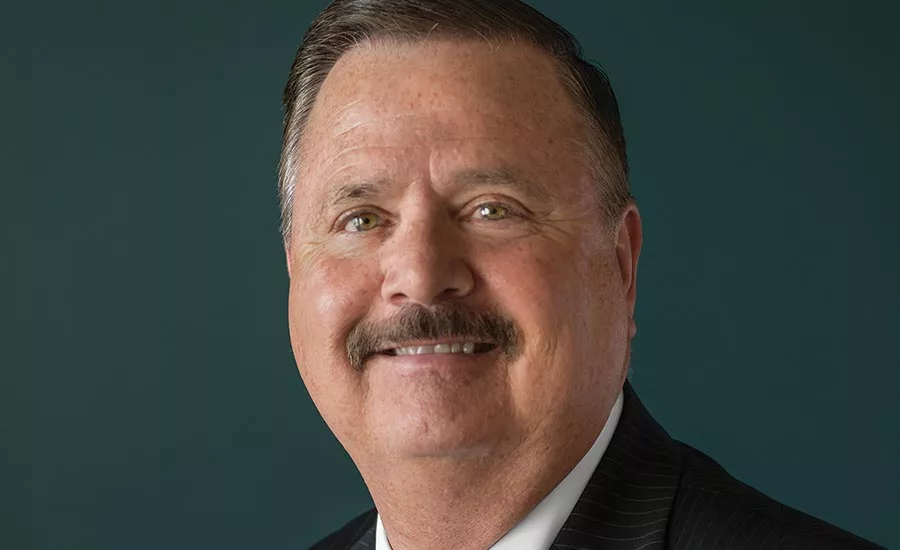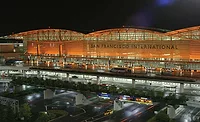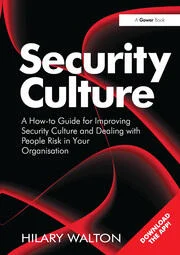Growing Terrorism Threats Lead Sports Security Leaders to Change Tactics
Security directors in sports venues need to address challenges without undermining the fan fun and entertainment.

From a professional golf standpoint, the biggest challenge is the open venue, yet some, such as the RBC Heritage, has limited controlled access points. The golf course stretches out for over three miles, with homes on both sides of the fairway, and spectators are coming from 100 different directions. Photo courtesy of RBC Heritage

“Security challenges facing the sports and entertainment industry, similar to other locations that host large mass gatherings, continually evolve as the result of terrorist acts internationally and domestically,” says Richard Fenton, vice president at Detroit-based Ilitch Holdings, which provides security to the Detroit Red Wings and Detroit Tigers. Photo courtesy of Richard Fenton


The terrorist incident at the Ariana Grande concert in Manchester, United Kingdom, in May raised new questions of how arenas that house sporting events and other types of attractions such as concerts can ensure fan safety.
Those charged with maintaining security at stadiums and other large venues face an overlapping array of challenges and must balance the need for crowd control with a fun and engaging fan experience. To do so, they need to implement constantly changing technology, properly and thoroughly train their security staff, and always be looking to the future.
To answer these questions, Security magazine assembled four experts: James DeMeo, MS, founder, president and CEO of Unified Sports & Entertainment Security Consulting (USESC) LLC, based in Raleigh, N.C.; Toby McSwain, director of security at Sea Pines Resort in Hilton Head, S.C.; Richard Fenton, vice president at Detroit-based Ilitch Holdings, which provides security to the Detroit Red Wings and Detroit Tigers, among other sports and entertainment properties; and Hector Rivera, executive advisor for security, safety and compliance, Puerto Rico Professional Baseball League.
Security magazine: What are the biggest and fastest growing challenges inside and outside of sports venues?
James DeMeo: We provide contracted law enforcement and event staff at the ballpark. There’s numerous challenges within the space: workplace violence, IEDs, active shooter, terrorism, the extremely unpredictable lone wolf. Even intoxicated patrons, or extreme weather. We have to look at safeguarding confined spaces and view security from multiple angles. It’s definitely about looking at the space from a holistic point of view. Ownership groups are understanding the importance of having the security group sit a little closer to the head of the table. You don’t want to be that one ownership group that cut corners on security. You don’t want to be that organization that’s used as an example for all the wrong reasons. The one thing that keeps you up at night is a security breach.
Toby McSwain: From a professional golf standpoint, the biggest challenge is the open venue. When you start looking at professional golf tournaments, some have controlled access points. The RBC Heritage is one of several tournaments where there is limited controlled access points. The golf course stretches out for over three miles, with homes on both sides of the fairway, and spectators are coming from 100 different directions – as opposed to an arena where everybody goes through a checkpoint with a magnetometer. We work very closely together with the PGA TOUR in preparing our security plan. They have security personnel on the course all week focusing on the safety of the players and caddies. My responsibility focuses on the spectators, sponsors and volunteers.
Hector Rivera: There are six teams in our league every winter, and then we have the Caribbean series, where other nations come in. In Puerto Rico, the stadium is owned by the municipality, which is responsible for security. We help them when it comes to temporary staff and also coordination with local law enforcement. We have not only the police department but other first responders and even space for federal agents. The league itself does not employ anyone. We have benchmark standard of what each club should do. Then, we’re more of a watchdog. Inside the stadium we have no major issues. One of the challenges we have is with the credentialing [for admittance to the stadium]. I hope by next winter we’re going to have something in place. Now everyone has something different, and we don’t know who’s who.
Richard Fenton: Security challenges facing the sports and entertainment industry, similar to other locations that host large mass gatherings, continually evolve as the result of terrorist acts internationally and domestically. We work collaboratively with a myriad of intelligence agencies, professional sports leagues security departments, and federal, state, county and local public safety agencies to address these evolving tactics and challenges.
Security magazine: How do you balance safety and security with maintaining a fun fan experience?
James DeMeo: It really is all about fan engagement, trying to create a safe and enjoyable and memorable experience, while at the same time not being overzealous and creating a police state. Security personnel need to be trained in verbal de-escalation skills so they can create harmonious relationships with the fans inside and on the way out. It’s all about that duty of care and making sure we have that trusting relationship. That’s definitely something that’s key to the marketing and sponsorship side. The one thing that keeps up at night is a security breach. We advocate proactive risk mitigation training and integration of technology including responsible social media monitoring and threat monitoring. That places employees and ownership groups in the best position possible to ward off potential threats.
Toby McSwain: So much of what we do is behind the scenes. The general spectator may see uniformed personnel, but most on the course are in plain clothes. A bomb team is always on the course dressed in bomb attire. The sheriff’s office K-9s do random sweeps throughout the day. Those are the types of things people see and know there’s security here. We have 1,200 volunteers that we use as eyes and ears. The PGA TOUR has a saying, ‘If you see something, say something.’ If it turns out to be nothing, no harm, no foul. We do a security review and analysis of our area prior to every golf tournament. Sea Pines is a private gated community and a small venue on the PGA TOUR. It’s tough moving people around the venue. But we do look at the fan experience and evaluate how our security plan impacts the spectator. We want people to have a good time. If you want to watch a professional TOUR player hit a ball, you can do that at any hole at the RBC Heritage.
Hector Rivera: The benefit that we have is that the folks inside the stadium are looking at the same police officers that they see outside. There’s not somebody with a yellow shirt that says, ‘Security.’ It’s almost invisible because they’re normally by the ends, and they’re just walking through the top and bottom. There’s nobody different who they haven’t seen in the past. They don’t see any added security. These are local police officers. They are not in riot type equipment.
Security magazine: What best practices have you instituted for crowd control?
James DeMeo: With 250-300 shows a year, it’s important to understand, if one night you have professional basketball and the next night the circus, that’s going to be completely different demographics. You need to be using social media to understand the type of crowd you’re going to attract, and have a hashtag that would alert social media manager to dispatch security. It could be an intoxicated fan in section 101. I refer to staff as the gatekeeper. They’re instrumental in setting the tone, building rapport, but also having situational awareness. It’s important that we train event security to be cognizant of threat behavior analysis. It all comes back to duty of care. It’s about understanding the ebb and flow, and utilizing the technology that’s in the space to make sure people are entertained but also safe at the same time.
Toby McSwain: We’re one of the smallest golf courses on the PGA TOUR. The tournament staff controls the amount of tickets they sell. If we oversell this place, people won’t be able to walk around. Everyone involved in the event wants the spectators to have a great time and always have the ability to watch golf. They have also worked hard to create new venues to the course to spread people around. This year was the first year for Wine@Nine, a wine bar between holes 1 and 9 that included food, seating and a video board. This is also the first year we have not had any weather-related issues in a long time. For example, if it’s a Friday at 2 o’clock, and we have roughly 50,000 people on our course, and we have a weather-related evacuation, that’s a lot of moving parts we have to put in place. So we monitor how many people we transport from our spectator parking area. We have a good estimate of how long it will take to safely clear the golf course and do so while play continues. We do have evacuation plans for other scenarios besides weather-related events.
Security magazine: How do you train your security staff, and what tools and methods work best?
James DeMeo: Consistently and proactively training staff will empower them. You need to make sure part-time and full-time staff mesh. You certainly want to empower the part-time staff to do the best job they can, and train them to the highest degree possible. If that means bringing in experts who can see things that security managers can’t see, they would be well served by availing themselves of not only an extra set of eyes and ears but utilizing the research that’s out there. Taking that perspective, taking that information and bringing it back to your staff in pre-event meetings, places everyone in the best position possible to create an amazing experience and further the goals of the organization.
Toby McSwain: We are in the process of working with NCS4 in designing a training model for our volunteer staff. Depending on where you’re assigned, and how you’re staffed, dictates the type of training you will receive. I have two or three meetings with all the agencies involved in our tournament. We talk about the what-ifs. Where is the bomb team? What are we doing with suspicious packages? We bring 13 agencies together. In the event we were to have an issue, the heads of security would come together and decide, what are we going to do? We all work under a “Unified Command” structure.
Richard Fenton: Training for our security staff includes classroom lectures on specific topics from “subject matter experts” like the Department of Homeland Security and FBI, online instruction through DHS and FEMA, instruction portals on specific topics, professional sports leagues’ mandated training on specific topics, collaborative training with NCS4, TEEX (the Texas A&M Engineering Extension Service) and others, and then general training on a host of topics that we have identified internally as being important to our venue operations and guest experience.
Hector Rivera: I want to have some funding so we can train members of each club. Right now we rely on each club for the training. We put that as a requirement for them so they can have a level of training. Some of this training is the typical topics you see from NCS4, regarding events and safety. But there’s nothing we’re directing as the league. For weather emergencies, we have FEMA go train the staff for each club. That’s something we have been able to drive. We’ve given them risk assessments, so they can do an assessment in case of evacuation.
Security magazine: What roles do you see security playing in your organization going into the future?
James DeMeo: Professional sports does a good job. I’m concerned about the midsized venues that may not have the same resources. I’m concerned about exterior zones that may not have the same level of concern. Certainly, drone technology when used for destructive reasons is rather concerning, and the threat of terrorism and lone wolf is extremely unpredictable. It’s all about duty of care and thought leadership. Being a leader in the space is not about creating fear, it’s about educating fans around the mantra that we’re all in this together. If something doesn’t feel right, it’s probably not right. We just continuously train on a daily basis to empower those front-line staff. There’s an increasing level of professionalism for part-time staff, who tend to have higher turnover. And you need good communication between law enforcement and contracted staff at the ballpark. That’s key to creating the best experience.
Toby McSwain: Security practices and technology seem like they’re forever evolving. There’s new technology that comes out every year. I see us using more cameras in the future. I’m meeting this week with a company that offers real-time monitoring that will show where all on-duty personnel are located. This new technology will allow us to dispatch from right in the command post just using the monitors that allows us to track our security staff.
Hector Rivera: We’ve got to utilize technology more. If we want to invest in technology that is going to have to come from the League. One area we’re going to invest in is credentialing. We want to know exactly who is in and out of our facility. It’s not just giving somebody a badge, it’s how to you get that person that badge. No matter how you look at it, it’s that ID card. Why are they entitled to this level of access?
Looking for a reprint of this article?
From high-res PDFs to custom plaques, order your copy today!






